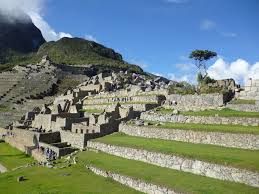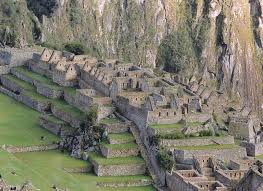Inca Inhabitation
In the fifteenth century, the Inca state began to expand under the rule of the emperor Pachacutec. Other cultures were conquered and assimilated to create the most powerful empire in the New World. At its peak the Inca empire stretched for 5500 kilometers from what is now southern Colombia down through Peru to central Chile.
Incas History
Like many other cultures, the Inca's history was based on a creation story. The Inca beginning starts with the creator god Tici Viracocha who came out of Lake Titicaca. The people inhabiting its surroundings had insulted the great god in some way so he destroyed them, and cast them into stone.

Polytheistic, they had for gods the Inti (sun), Pachacámac and Viracocha, and as divinities to Quilla (moon), Illapa (lightning or ray), Pirúa (protector of the treasures and provisions - the planet Jupiter), among others. They considered the man like a body being and soul, and the existence of another physical life after death.
Inca Government and Laws
The Inca culture preaches three laws: Ama Sua (do not steal), Ama Llulla (do not lie) and Ama Quella (do not be lazy). There were many local forms of worship, most of them concerning local sacred "Huacas", but the Inca leadership encouraged the worship of Inti - the sun god - and imposed its sovereignty above other cults such as that of Pachamama. The Incas considered their King, the Sapa Inca, to be the "child of the sun."
One of the problems of government was the redistribution of food and clothing. The corn, potatoes and cotton needed by millions of people were all produced in different areas of the empire. The Inca solved this by developing a form of practical socialism. Each village produced what its ecosystem would permit and gave its surpluses to other villages in different areas.

Political ties were also important to the Inca. In fact, the political realm is where we see the most ornate form of Inca art: the tapestries. These colorful woven cloths were given to solidify contracts between the capital of Cusco and the governing powers of outlying territories.
This respect for the stone and its inner powers gave rise to their expert masonry. They used stones of unusual size and fitted them together without mortar to form walls; one could not insert a sheet of paper between these stones they were so carefully crafted together. The surfaces were smoothly carved and were not squared off to make them look almost alive.
Inca Culture
The success of the Inca culture was because the Incas keep a reciprocity agreement with the tribes recently add to the Inca kingdom. It means the Incas respect the traditions, possessions, religion and even authorities of the conquered tribes.
More info on- Inca Language
|




